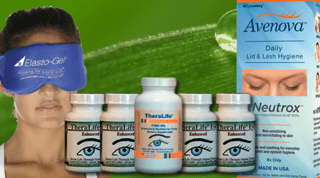Eye crusts are often known also as eye gunks as well as its technical name Rheum.
Picture it: The dawn breaks. The eyeballs are tightly attached by a crusty glue that keeps it from moving.
Morning eye gunk normal is naturally occurring.
There is clearly a spectrum of normal everyday ocular gunk that suggests something is wrong.
Tell me about the cause of eye crust appearing at the same time at night as the day before and how to deal with it.
From self-cleaning to infection-fighting, crusty eyes actually have a purpose.
What is eye crust?
There could be a few reasons behind your crusty eyes.
Most of the time, the sleep crust normal in the corners of your eyes in the morning is just residue from your eye’s protective process.
Eye discharge, or “sleep” in eyes, is a mixture in the eyes where toxins accumulate in your eye when you are sleeping.
It is dry and sticky and a little sticky depending on how much water has evaporated.
The term eye discharge is commonly also known as eye mattering, eye booger, eye gunk, and eye pus.
Sometimes called “rheum,” eye discharge provides a protection function, eliminating irritants and other harmful materials from tear films and eye surfaces.
Is Eye Crust Normal?
Finding crusty residue in the corners and along the lashes of your eyes when you wake up is normal.
This matter can look yellow, hard and crusty, clear and sticky or thin and watery like tears.
However, some eye goop is not the typical sleep crust, and could signal that you have an eye problem.
A number of conditions can increase the production of rheum in the eye.
In the case of allergic conjunctivitis , the buildup of rheum can be considerable, preventing the sufferer from opening one or both of the eyes upon waking without prior cleansing of the eye area.
The presence of pus in an instance of heavy rheum buildup can indicate dry eye or conjunctivitis , among other infections.
What causes your eye crust?
What causes crusty eyes in the morning?
Chances are, the sleep crust in your eyes is perfectly normal and part of your body’s amazing, self-regulating cleaning system.
Sleep crust is a mix of mucus, exfoliated skin cells, oils, and tears produced or shed by the eye during sleep,” said Pettey. “It’s a natural part of healthy eye function. During the day, all of that stuff is washed away by blinking natural tears, which keep it from sticking around. But when you’re asleep
Natural causes During the day, blinking does the job of wiping away dust, old cells, extra mucus, and tears from your eyes.
When you’re sleeping, you’re not blinking, so all of that mucus, oil, dirt and skin cells accumulate in the corners of your eyes.
And while you sleep, everything congeals and dries out, forming that crust.
This is typically part of the natural process, but there are times when something else is going on.
Rheum from the eyes is particularly common.
Dried rheum near the eyes is commonly called sleep , sleepy-seeds , sleepy buds , sleepy bugs , sleepy sand , sleepy winks, eye boogers , eye goop , sleepy dust , sleepies , eye gunk , eye crust , sleepy men , crusties , dozy dust , or sleepy dirt.
When the individual is awake, blinking of the eyelid causes rheum to be washed away with tears via the nasolacrimal duct . The absence of this action during sleep, however, results in a small amount of dry rheum accumulating
Causes of crusty eyes
There could be several causes of rheum in the eyes.
It forms crust in your eye corners or makes your lashes stick together. The reasons are often simple, but also medically important.
infection that should be evaluated by your eye doctor straightaway.
Sleeping in your eyes is generally no reason to be alarming but when you notice an abnormal coloration of your eyes and the presence of eye gunk it may signal an infection.
Typical conditions that can cause abnormal eye discharge are as follows:
Pink eye (conjunctivitis)
Pink eye is a contagious eye infection is mostly in schools, but can also impact both kids and adults.
The disease has it’s title largely derived from an initial symptom: reddening of the conjunctivum, the area around a white-eyed area.
If the eye infection was bacterial, it might be yellowish-green.
Viral pink eye infections give you red and watery eyes.
Pink eye is contagious, so make sure your actions are carefully controlled. “Do not shake someone’s hand.
There are so many overlapping symptoms between viral and bacterial conjunctivitis, treatments can differ
Discharge from Pink Eye
Pink eye (conjunctivitis) is known for the goopy mess it makes of your eyes.
But did you know that what that goop looks like varies based on the type of conjunctivitis you have?
If your eyes are sticky and gooey with a thick gray, yellow, or green discharge, the culprit is usually bacterial.
Keep Your Eyes Clean Although it’s tempting to rub your eyes with your hands in the morning, try to resist.
It’s never a good idea, as germs on your hands could lead to an eye infection.
The best way to clean your eyes (and, it feels good!) is to lay a washcloth soaked with very warm water on your eyelids and lashes and gently clean them.
If your eyes seem to be extra-sticky, relax and leave the washcloth on there for a few minutes.
More severe symptoms to look out for include swollen eyelids and a yellow or green discharge, which can be a sign of bacterial or viral conjunctivitis.
Allergies
If your allergies recurring throughout the season, your eyes may have been rubbed or cracked.
When someone develops allergies they create the resulting mucus, which helps to get rid of allergens.
The excessive discharge may feel as though your eyes have remained closed.
All kinds of pollen and dust may cause allergies.
Itchy, redness, and inflammation are other symptoms.
What could help relieve stress would be the shower.
Blocked Tear Duct
A blocked tear duct stops your eyes from draining normally.
If you have this condition, you may notice that small balls of yellow or white mucus are gathering around the corner of one of your eyes.
Other symptoms include redness, irritation, pain, and swelling in your eyelid.
Symptoms of a blocked tear duct include a constant pooling of tears in the eye (even when the child isn’t crying), which can spill onto the cheek.
Sticky eye mucus also may be present, especially collecting on the eyelid margin and causing the eyelashes stick together.
To help relieve symptoms, keep the area clean by regularly.
Babies
Note for Parents Babies and blocked tear ducts Many babies are born with obstructed tear ducts — the tubes that drain tears from the surface of the eyes to the nasal cavity — causing watery eyes and (sometimes) eye discharge.
Contact lenses
Remove your contact lenses before you lie down for the night, and don’t try to extend the life of your contacts beyond what the manufacturer recommends.
Blepharitis
One condition that causes crusty eyes during waking hours is blepharitis , a common problem affecting the eyelid at the base of your eyelashes.
Dry eyes
Dry eye When you have chronic (or even occasional) dry eye , your eye may produce stringy mucus. This can result in an accumulation of eye crust that’s gritty or sticky.
you should see your healthcare provider when you have any of these symptoms:
- Discharge that’s green or yellow.
- Any pain in your eyes.
- Swelling of your eyelids.
- Sensitivity to light.
- Blurry vision that’s not typical
Tell me the source of eye mucus?
Eye discharge (rheum) can affect the tear film in the eyes, it is advisable to keep an eye healthy.
It consists in large parts of thin, watery mucus that is produced by the conjunctival cells (called mucine), and meibum an oil containing substance produced in the meibinomenous gland.
Eye discharge treatment
When should you seek medical help?
Some symptoms indicate that it’s time to go beyond home remedies and see an eye doctor.
These symptoms include:
- any kind of pain in your eye
- redness and irritation in your eye
- difficulty opening your eye, due to eye gunk or otherwise green or dark yellow eye discharge.
- light sensitivity
- blurred vision
Your eye doctor will do an initial exam to determine the cause of your symptoms.
What’s the best way to treat crusty eyes in the morning?
If eye crust is your only symptom, you can probably treat it at home.
The American Academy of Ophthalmology puts emphasis on washing your hands before you try to rub any morning goop out of your eyes.
Usually a few drops in the eye area have little impact on the eyes.
Occasionally, a physician will give eye drops and ointments that contain antimicrobial or non virological ingredients.
When eye allergy causes dry eyes or headaches, it helps relieve the symptoms.
Warm compresses placed over your eyes can ease itching and help eliminate eye smears.
Cold compresses and over-the-counter (OTC) eye drops can also help, but be sure to consult your doctor if inflammation and discharge worsen.
If your eyes feel gritty or dry after wiping out the crust, you may want to use eye drops to hydrate your eyeballs and get ready for the day.
Hydrating eye drops or saline solution are available over-the-counter and can cleanse your eye of any remaining film or gunk.
The best way to clean your eyes (and, it feels good!) is to lay a washcloth soaked with very warm water on your eyelids and lashes and gently clean them. If your eyes seem to be extra-sticky, relax and leave the washcloth on there for a few minutes.
How to Remove Eye Crust at Home
First, always wash your hands before and after cleaning your eyes .
As tempting as it is to give your eyes a good rub with your hands in the morning, don’t do it.
Your hands carry germs to the eyes, risking infection.
To remove eye crust, soak a clean washcloth in warm water (hot water can injure the delicate skin on the eyelids and around the eyes).
Lay the washcloth on your eyelids and eyelashes and very gently rub your eyes to clean them.
However, bacterial pink eye requires antibiotics . Both viral and bacterial conjunctivitis are contagious, so a person with this condition should take care to wash their hands thoroughly and avoid touching their eyes.
If you are experiencing more eye crust than usual, or are developing uncomfortable symptoms, call your eye doctor. There may be something else at play besides your eyes’ normal drainage system.
Crusty Eye Treatment from TheraLife
References
Blocked tear duct symptoms. https://www.aao.org/eye-health/diseases/blocked-tear-duct-symptoms Boyd, K. (2019)
Tools & Resources Treatment Plan for Neuromyelitis Optica Warm Eye Compress for Eye Problems Pink Eye (Conjunctivitis)





